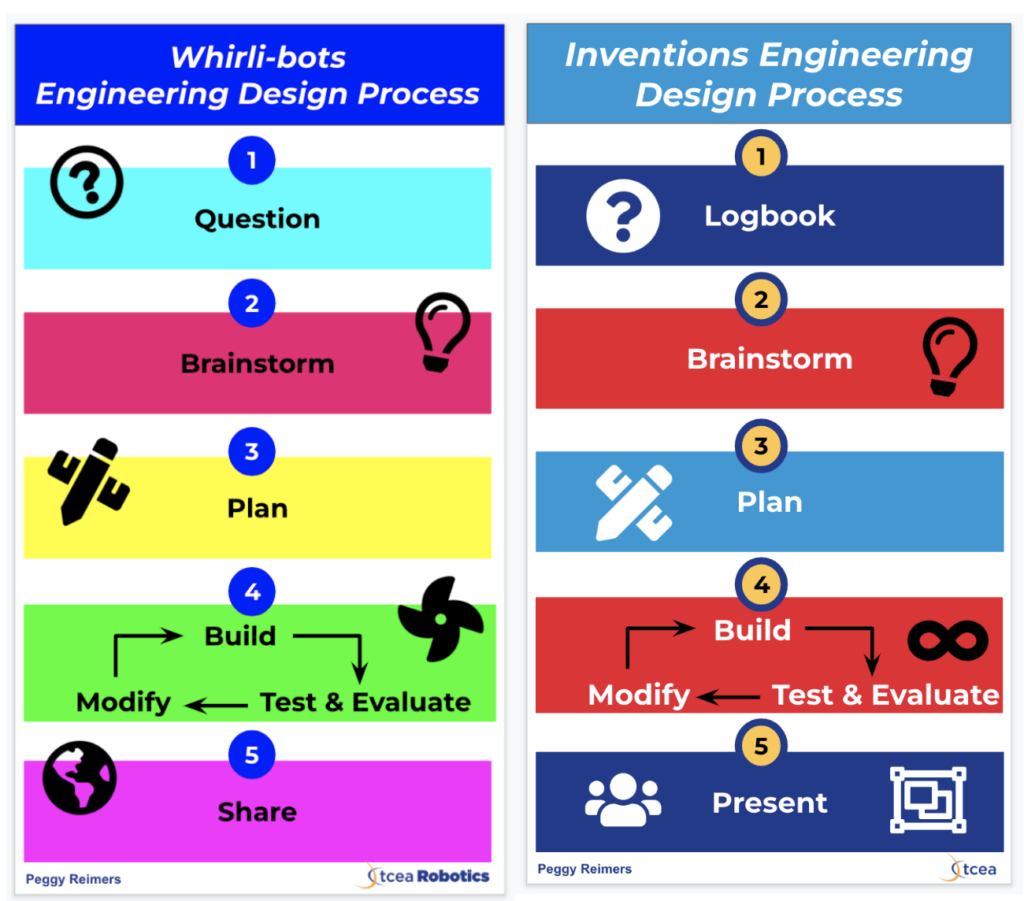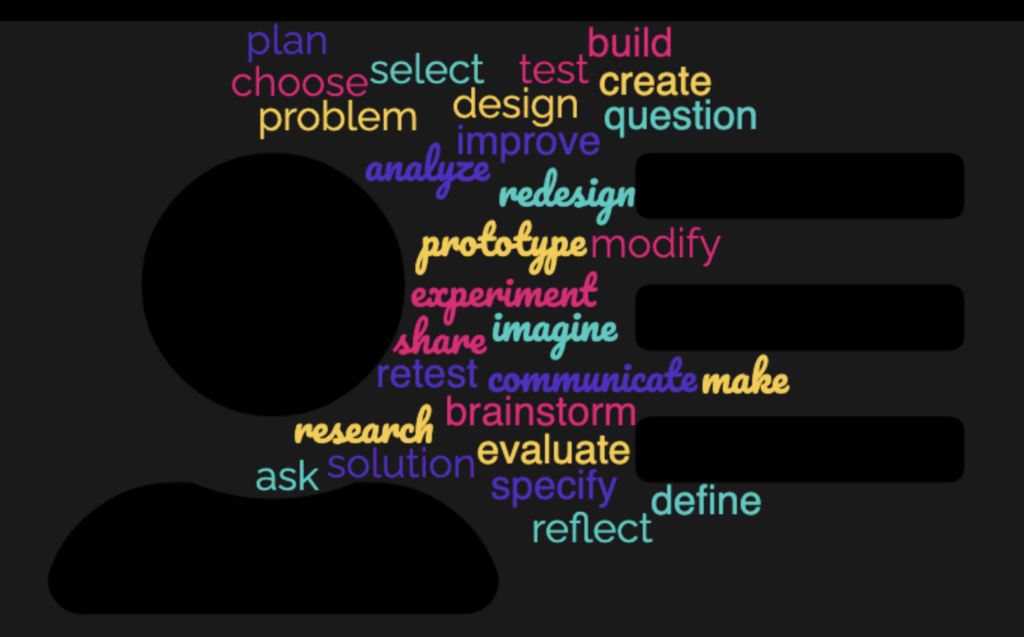The engineering design process (EDP) is used by creators, engineers, and problem solvers all around the globe. So it would make sense to introduce this process to elementary students. The best thing about this process is that it can come in so many shapes and sizes. If you do a quick image search for the engineering design process, you will view EDPs that have three to twelve steps and every number in between. They can be cyclical in shape, set up like a flow chart, or a simple list.
What Is the Engineering Design Process?
The engineering design process is a series of steps that engineers follow to find a solution to a problem. The steps include problem-solving processes such as determining your objectives and constraints, prototyping, testing, and evaluating.
When Can the EDP Be Used?
It’s simple. Anytime you have a challenge or problem to solve! Creating a grocery list, believe it or not, could be considered a challenge or problem. Let’s take a look at this.
- Define the problem. “I need to get groceries.”
- Brainstorm. “What will I cook?”
- Plan. “What do I need to add to my grocery list to cook the meals I want to cook? What items do I already have?”
- Action. Driving to and from the grocery store and selecting, crossing off the list, purchasing, and putting away the groceries are all necessary action steps.
- Create. Make, test, and improve the recipes
- Share. Time to eat!

Here at TCEA we have had many opportunities to share the EDP with students. The EDP has been part of our 3D Design Contest, the Virtual Robotics Contest, and our Inventions Contest. For a classroom teacher, remember you can create your own EDP for any activity you want your students to work through.
Tips for Using the EDP in the Classroom
I recommend starting with a very simple problem that doesn’t involve too much writing. Work through the EDP as a whole group activity the first few times you work through the process. This will familiarize students, with your guidance, and prepare them for small group work once they’ve got it down. Also, incorporate space in your EDP to include drawings, emojis, and checklists. Here are some common words you can use to create an EDP.

Additional Resources for Getting Started
- Make a copy of this editable Google Slide and create your own EDP.
- Check out this humorous take: The Engineering Design Process: A Taco Party
- Watch a great video to explain the EDP to students: The Engineering Process: Crash Course Kids #12.2
- Our 2020-2021 virtual robotics contest, Whirlibots is a great challenge using robotics and the engineering process. I even have a walk-through video that explains how you use the EDP with this challenge.
- Here is a mini engineering journal you can print and use in your classroom.

